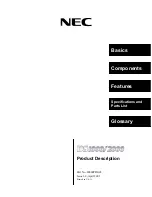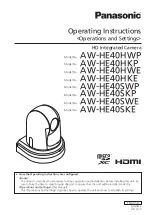
77
Compared with the previous fiscal year,
net cash provided by operating activities
decreased, due to a year on year increase in
notes and accounts receivable, trade during
the fiscal year ended March 31, 2004, com-
pared with a year on year decrease during
the fiscal year ended March 31, 2003. The
increase in notes and accounts receivable,
trade was primarily due to an increase in sales
to outside customers, in the fourth quarter
ended March 31, 2004, of digital still cameras,
flat panel televisions and cellular phones (sold
to Sony Ericsson) in the Electronics segment,
as well as home entertainment revenues in the
Pictures segment, compared with the fourth
quarter ended March 31, 2003. Although
certain factors contributed to an increase in
operating cash flow, such as a year on year
increase, during the fiscal year ended March
31, 2004, in notes and accounts payable,
trade, compared with a year on year decrease
in the fiscal year ended March 31, 2003,
mainly due to the increase in the procure-
ment of raw materials and parts reflecting the
increase in sales to outside customers in the
Electronics segment, these factors were offset
by factors such as an increase in inventories in
the Electronics segment during the fiscal year
ended March 31, 2004 compared with a
decrease in the fiscal year ended March 31,
2003, which decreased operating cash flow.
Investing Activities: During the fiscal year,
Sony used 761.8 billion yen of net cash in
investing activities, an increase of 55.4 billion
yen, or 7.8 percent, compared with the
previous fiscal year. Of this total, all segments
excluding the Financial Services segment used
352.5 billion yen of net cash in investing
activities, an increase of 166.6 billion yen, or
89.6 percent, compared with the previous
fiscal year, and the Financial Services segment
used 401.6 billion yen in net cash, a decrease
of 115.1 billion yen, or 22.3 percent.
During the fiscal year, purchases of fixed assets
(capital expenditures) were made, primarily due to
proactive capital expenditures in the Electronics
and Game segments mainly for next generation
broadband microprocessors and CCDs, and pay-
ments for investments and advances exceeded
proceeds in the Financial Services segment due
to an increase in assets under management
(refer to “Financial Services”).
In December 2003, Sony and Bertelsmann
AG signed a binding agreement to combine
their recorded music businesses in a joint ven-
ture. The newly formed company, which will
be known as Sony BMG, will be 50 percent
owned by each parent company. The merger is
subject to regulatory approvals in the U.S. and
European Union.
In order to fulfill its commitments, Sony
will use cash generated by its operating activi-
ties, net excess cash within the Sony group
through group finance subsidiaries such as
SGTS and raise funds from the global capital
markets and from banks when necessary.
OFF-BALANCE SHEET ARRANGEMENTS
During the fiscal year ended March 31, 2004,
Sony entered into a new accounts receivable
securitization program which provides for the
accelerated receipt of up to 500 million U.S.
dollars of cash on eligible trade accounts
receivable of Sony’s U.S. electronics subsidiary
and replaced the previous accounts receivable
securitization program which provided for the
accelerated receipt of up to 900 million U.S.
dollars. Through this program, Sony can
securitize and sell a percentage of undivided
interest in that pool of receivables to several
multi-seller commercial paper conduits owned
and operated by a bank. These securitization
transactions are accounted for as a sale in
accordance with Statement of Financial
Accounting Standards (“FAS”) No. 140,
“Accounting for Transfers and Servicing of
Financial Assets and Extinguishments of Liabili-
ties”, because Sony has relinquished control of
the receivables. Accordingly, accounts receivable
sold under these facilities are excluded from
receivables in the accompanying consolidated
balance sheet. There were no amounts out-
standing under this facility at March 31, 2004.
Sony has, from time to time, entered into
various financing arrangements with VIEs. These
arrangements include facilities which provide
for the leasing of certain property, the financing
of film production and the development and
operation of a multi-use real estate complex.
Although not a significant part of its financing
activities, Sony employs these arrangements
because they provide a diversification of funding
sources. The assets and liabilities associated with
these arrangements previously qualified for off-
balance sheet treatment. On July 1, 2003, Sony
adopted FIN 46 and accordingly, the assets and
liabilities associated with these arrangements
were consolidated. Refer to Note 22 of Notes to
Consolidated Financial Statements for more in-
formation. As a result, Sony recognized a one
time charge with no tax effect of 2.1 billion yen
for a cumulative effect of accounting change.
Additionally, Sony’s assets and liabilities in-
creased as non-cash transactions, which resulted
in no cash flows, by 95.3 billion yen and 98.0
billion yen, respectively. Cash and cash equiva-
lents also increased by 1.5 billion yen. For all the
VIEs in which Sony holds a significant variable
interest Sony is a primary beneficiary, and all
these VIEs are consolidated by Sony.
CASH FLOWS
(The fiscal year ended March 31, 2004 compared
with the fiscal year ended March 31, 2003.)
Operating Activities: During the fiscal year
ended March 31, 2004, Sony generated 632.6
billion yen of net cash from operating activities,
a decrease of 221.2 billion yen, or 25.9 percent
compared with the previous fiscal year. Of this
total, all segments excluding the Financial Ser-
vices segment generated 401.1 billion yen of
net cash from operating activities, a decrease of
143.0 billion yen, or 26.3 percent, compared
with the previous year, and the Financial
Services segment generated 241.6 billion yen of
net cash from operating activities, a decrease of
73.1 billion yen, or 23.2 percent, compared
with the previous year.
During the fiscal year, profits from the
Game, Financial Services, Pictures and Music
segments, an increase in depreciation ex-
penses, and an increase in notes and accounts
payable, trade, primarily due to an increase in
the procurement of raw materials and parts
reflecting the increase in sales to outside cus-
tomers in the Electronics segment, contributed
to operating cash flow. Partially offsetting
these contributions were factors including an
increase in inventories in the Electronics seg-
ment and an increase in notes and accounts
receivable, trade in the Electronics and Pictures
segments. An increase in future insurance
policy benefits and other, due to an increase in
insurance-in-force, contributed to operating
cash flow in the Financial Services segment.
















































